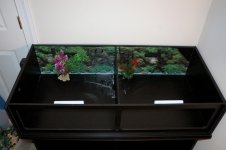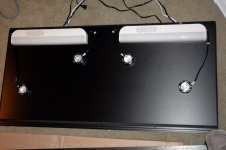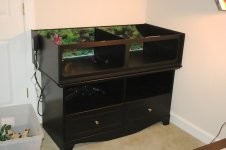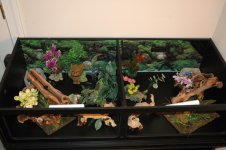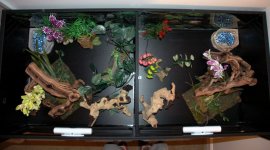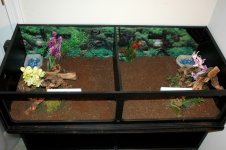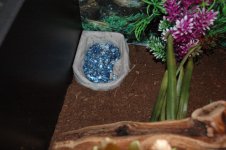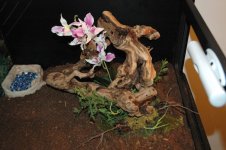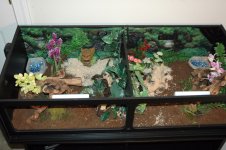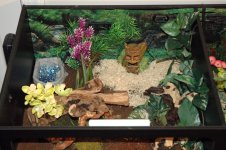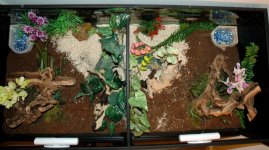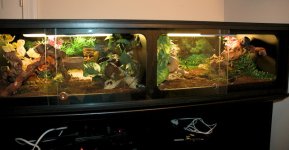So I am in the process of upgrading my snakes' living quarters - with an Animal Plastics cage - so excited - and have thought about taking this opportunity to change from Aspen substrate which I use now, to something a little less irritating - I am not super allergic to Aspen, but I don't like how it makes my throat and eyes itchy when messing with it.
I came across an interesting article about an Environmental Enrichment tank setup on the T-Rex web site - and found another interesting article here.
So my question is - do any of you have any experience with this type of setup? I am specifically interested in information on substrate options.
I don't want to take away the fun that my snakes have burrowing in their aspen, so would definitely want an option that still allows for this activity - but at the same time, would love to find something a little more natural looking than aspen as well as a little easier on my sinuses.
Below is a blurb from the t-rex article:
I came across an interesting article about an Environmental Enrichment tank setup on the T-Rex web site - and found another interesting article here.
So my question is - do any of you have any experience with this type of setup? I am specifically interested in information on substrate options.
I don't want to take away the fun that my snakes have burrowing in their aspen, so would definitely want an option that still allows for this activity - but at the same time, would love to find something a little more natural looking than aspen as well as a little easier on my sinuses.
Below is a blurb from the t-rex article:
Vivarium Design 2: Naturalistic EE* method
Owners are often surprised at how much more enjoyable snakes are to keep when provided with larger more complex vivariums designed with EE (environmental enrichment) features. When kept under such conditions, species that may have been considered dull pets prove interesting and a pleasure to own. This is true of corn snakes which end up spending much more time active and basking in the open rather than concealed in their shelters.
Substrates
A key component of naturalistic systems is to use a 2-3 inch layer of soil-less substrate, such as coir, peat moss, or special mixed formulas that are kept moist, with the upper layer allowed to dry as in nature. Maintenance consists of scooping out fecal material weekly, then stirring the upper layer of substrate such that any trace of waste matter or urates are driven into the moist sublayer. In time this moist sublayer will become bioactive and develop a bacterial flora that will break down waste matter. To keep the system active the substrate should be lightly watered or misted once or twice weekly to maintain a moist sublayer. The substrate should never be allowed to become soggy, which will kill beneficial bacteria and cause it to smell bad. This approach will require little to no additional maintenance other than addition or partial replacement of substrate every 6-12 months. A healthy bioactive substrate will remain odorless for years except for a rich fresh earth smell. Another benefit of a moist bioactive substrate in contrast to dry wood shavings or chips is that they can be kept moist when snakes are in shed to provide the humidity required for problem-free shedding. When kept on a moist substrate it is common for snakes in shed to burrow in the substrate until a shed is completed.
Last edited:

